Student Profile: Joseph Samona13 min read
This profile is one in a series highlighting School of Dentistry alumni, donors and students.
Note: This profile’s photographs, by Leisa Thompson Photography, were taken in February before local, state and national advisories on social distancing and other restrictions were put in place because of the Coronavirus outbreak.
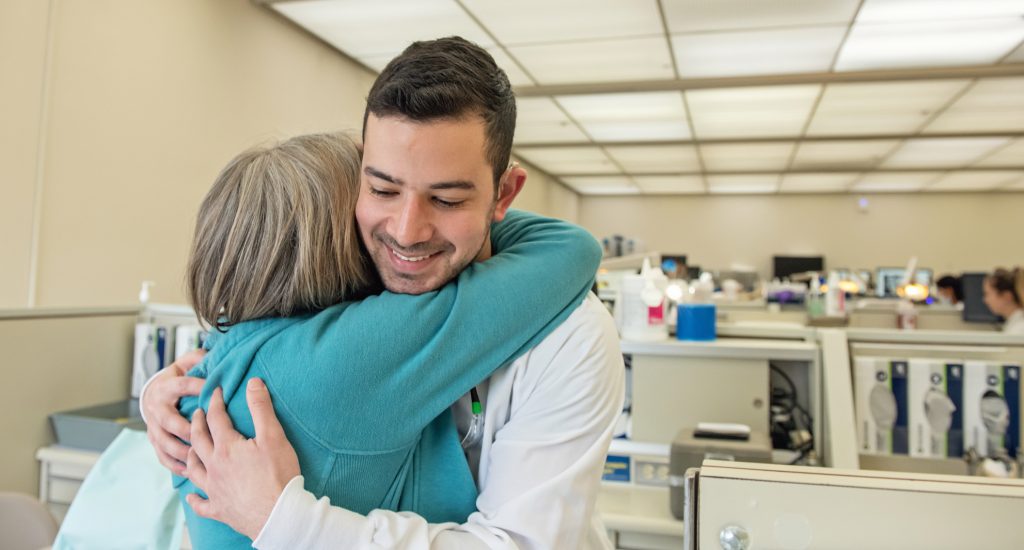
Anita Stewart is relaxing comfortably in a dental chair at a University of Michigan School of Dentistry clinic early on a morning in February. She engages in friendly banter with fourth-year dental student Joe Samona as he adjusts a wax model of what will eventually be a set of partial dentures for Stewart.
“Take your time. Do it right,” she jokes. “I wanted a big smile for my husband’s birthday tomorrow.” Samona, who is deaf, doesn’t hear the joke because he has momentarily turned away from her. His sign language interpreter gets his attention and repeats the comment in American Sign Language.
“You’ll have a big smile,” Samona assures Stewart, but he explains that the finished denture will be fitted at her next appointment in two weeks. After slightly reshaping the wax model, he fits it into Stewart’s mouth again and asks if it feels better. “Yes,” she says and flashes two thumbs up.
Stewart, a resident of Grass Lake, has been coming to dental appointments with Samona for several months. She credits him with making her feel so at ease that one time she fell asleep in the dental chair. “I trust him,” she said. “It will be so nice to have teeth again.” She has been missing some back teeth for a while, but more recently she lost one upper and one lower front tooth. “That was my smile,” she said, emotion rising in her voice. “Joe’s giving that back to me. I’m going to kiss him in two weeks.” At the end of this appointment, however, she chooses to give him merely a big hug.
It’s that ability to give people back their smiles that drew Samona into dentistry. Born profoundly deaf, he grew up lip-reading, which meant he paid a lot of attention to people’s mouths. He noticed that some people were shy about showing their smiles, while others smiled easily and often. He realized those reluctant to smile often lacked confidence in their appearance. He decided he wanted to help those people improve their smiles and build their self-esteem. This spring, when he graduates from the School of Dentistry, he will have achieved his goal through an academic journey that took a special determination and focus.
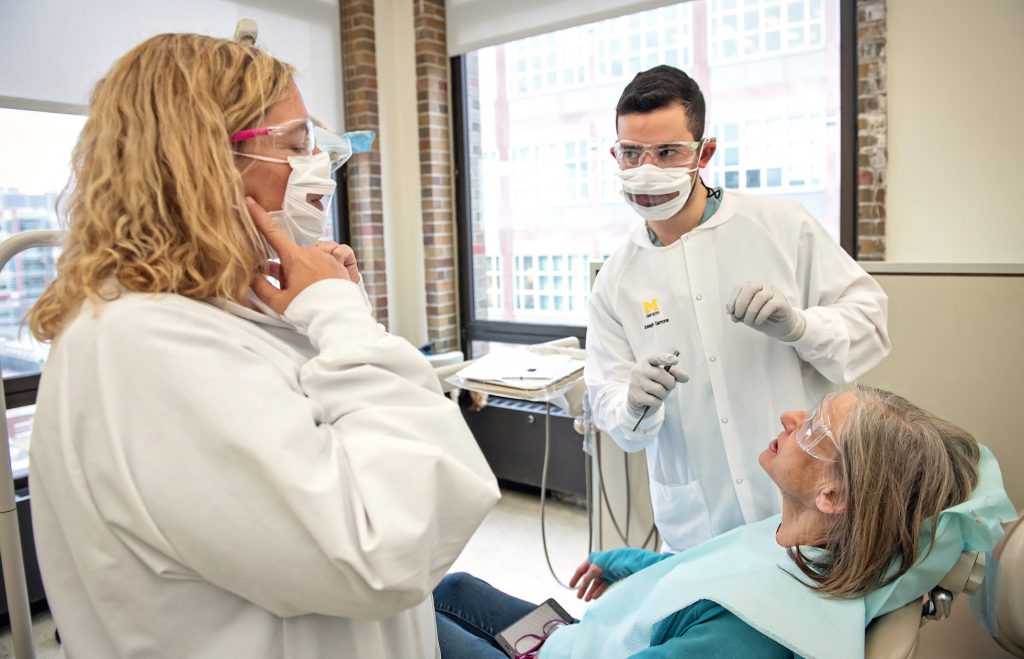
Samona, 25, grew up in Michigan in the West Bloomfield area. His parents moved to the United States from Iraq with his four older sisters, one of whom is also deaf, before he was born. His parents left their native country seeking better education resources for his deaf sister. After Joe was born in Michigan, his parents were shocked at first to have another deaf child, he said, but they resolved to provide the best education possible.
“I grew up in an oral environment, so I didn’t know very much sign language at that time,” Samona said. “I grew up speaking and learning how to read lips. I was in speech therapy and a special education program. And I was taking courses that were really below my grade level. So my parents decided at that time to move me to another school because I was doing really well.”
His academic success continued in the regular school system and eventually he attended Brother Rice High School, a Catholic school in Bloomfield Hills, where his favorite subjects were math and science. His grades were good and he began to take advanced courses. “That really sparked a lot of motivation in me,” he said, “because I realized I could do more. So that’s when I decided to definitely go into the medical field.”
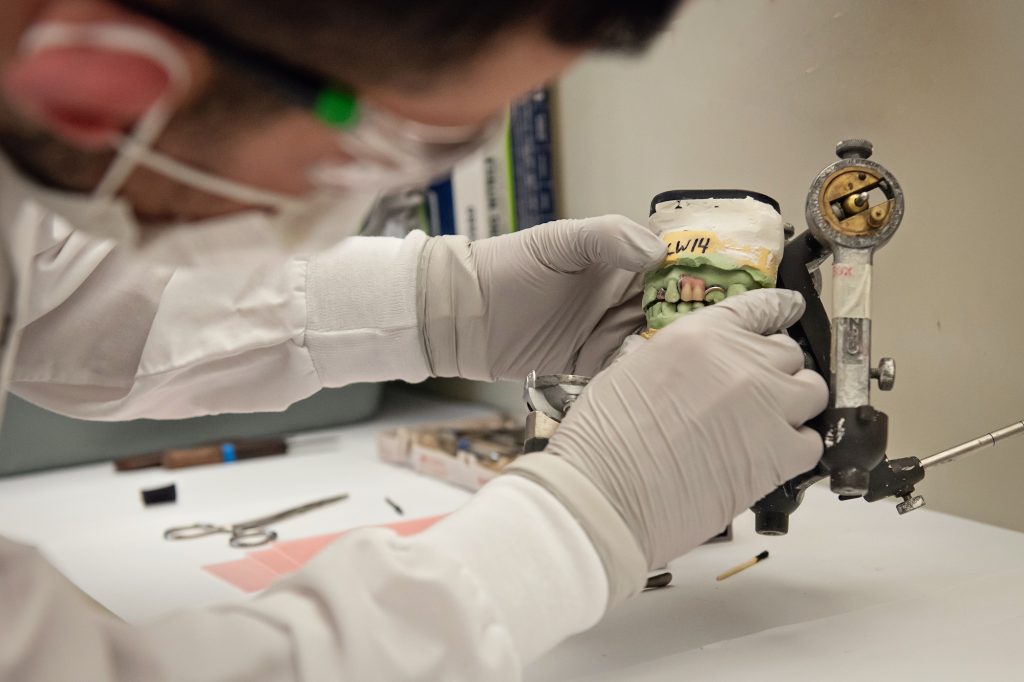
Being mainstreamed in regular classrooms meant Samona had to adapt and find accommodations to thrive in the hearing world. It was difficult. He would lip-read his teachers and they would try to always look toward him, but sometimes they would turn away as they talked and he would miss portions of a lecture or discussion. That meant studying more outside of class than other students by reading additional books on certain topics and learning on his own. Being immersed in the hearing world also leaves deaf students feeling isolated and left out. “I didn’t have many friends,” he said. That changed when he joined Academic Bowl competitions for students who are deaf and hard of hearing. He became more involved with the deaf community. Getting to know other deaf students boosted his self-confidence and helped him to become proud of who he is, he said.
His decision to pursue dentistry came one day in his senior year of high school when he was sitting in a dental chair during an appointment. “I saw my dentist and it was just instant,” he said.
After high school, he attended University of Detroit Mercy and majored in biology. It was there that he first had a sign language interpreter for classes. “That completely changed my education,” he said. He was able to grasp more of the information presented in classes and suddenly learning was a bit easier. After completing his undergraduate degree, he was accepted at several dental schools and chose U-M. “I felt a good vibe here. It just felt right,” he said.
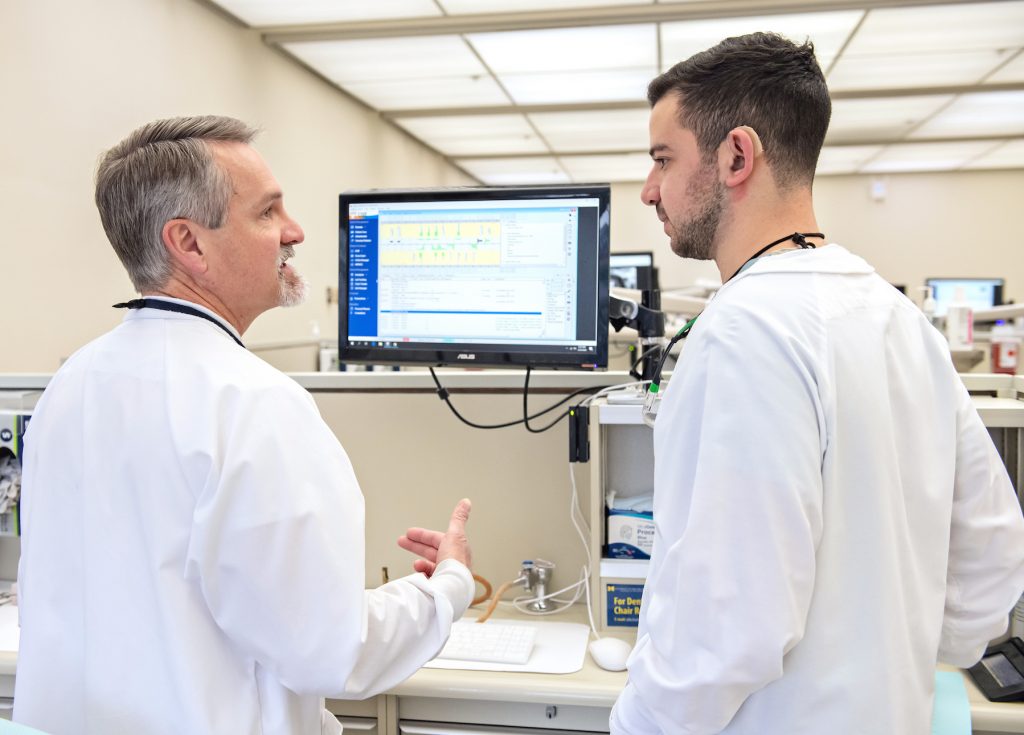
Samona knew dental school would be difficult, so he wanted to make sure he had the support he needed. Through the U-M Office of Services for Students with Disabilities (SSD), Samona received access to sign language interpreters as well as a service that gave him word-for-word transcriptions of class lectures.
When he reached the point in the curriculum when students begin treating patients in clinics, he realized there weren’t signs in American Sign Language for many of the dental terms, treatments and instruments. He collaborated with his interpreters to create signs so that they could communicate better with each other and with patients. The specially designed surgical masks that Samona and his interpreters wear in clinic have clear plastic over the mouth area so they can read each other’s lips.
Samona is believed to be only the second deaf person to graduate from the School of Dentistry – the first was about 20 years ago – although several students with various degrees of hearing loss have earned DDS degrees over the years. Another deaf student is following close behind Samona as a member of the Class of 2023. (Samona and the first-year dental student are the only two deaf students on the U-M campus this year, according to the SSD office, although there were about 45 hard of hearing students enrolled.)
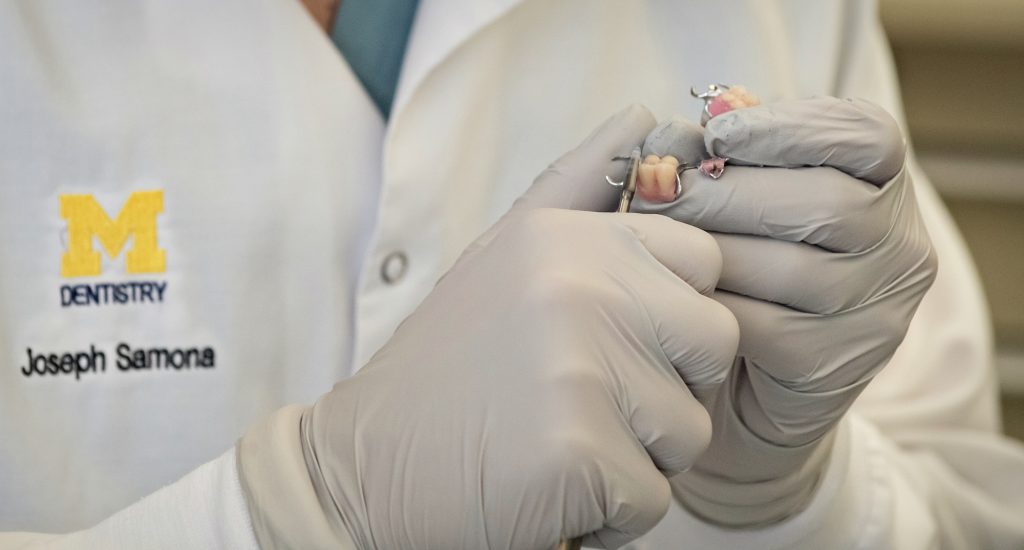
Samona says patients have generally been receptive to him, though some are uneasy about having a deaf dentist and unsure of how to communicate. “But as a provider, I explain and really let them know the whole process and what I’m doing,” he said.
One of Samona’s goals is to foster better oral education and oral health in the deaf community. That’s something that was lacking for him as he was growing up and other people who are deaf have told him the same was true for them. One way he’s seeking to do that is through a project for the school’s Pathways program, an independent study course that students complete throughout their four years. Samona created a 30-minute oral health education video in which he uses American Sign Language to discuss the structure of teeth, how to properly brush and floss, and diet suggestions to foster good oral health. In the video, Samona also talks about his own life, his journey into dentistry and his pride in getting his education at the No. 1 dental school in the country.
He developed the video with his mentor, Dr. Stephen Stefanac, a clinical professor in the School of Dentistry. Samona was recorded standing in front of a “green screen” using sign language, a method that allowed his image to be more easily incorporated with the other visuals used in the video. With help from another faculty member, Professor Marita Inglehart, he developed a questionnaire to measure viewer response to the video. Samona showed the video to students at two Michigan high schools for students who are deaf or hard of hearing. He surveyed students before and after they watched the video and participated in a discussion about oral health. He found the video improved students’ diet-related knowledge and convinced them to floss more.
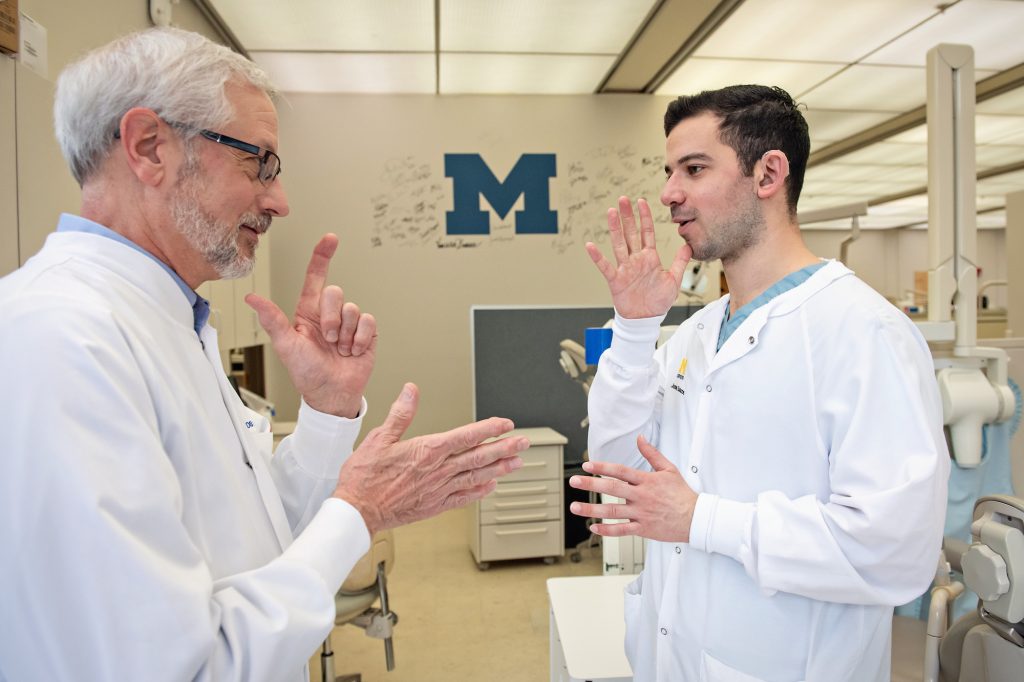
Samona now hopes to expand the reach of his video on a much broader scale. “I emailed some deaf organizations and deaf institutes within the United States to see if they wanted to implement it into some of their educational programming,” he said. “They’re very interested, and they’re still working on it.”
Stefanac thinks the video may attract other students who are deaf to the U-M dental school. “The beauty of this video is that it is up on YouTube and he has shared it with the national deaf community.”
Stefanac had never worked with a deaf student before Samona came to the dental school. The experience inspired him to begin learning American Sign Language, a work in progress with weekly tutoring sessions over the last nine months. “I really like linguistics and how languages are put together,” Stefanac said.
He calls Samona an exceptional student who has been very active in the school and frequently volunteered to work at weekend clinics, providing treatment for children and underserved patients. “He’s been really emboldened by his time here,” Stefanac said. “And his class has not made a big deal of his disability. He put himself in the position of a dental student who wanted to do everything. He wouldn’t see himself as a student with a disability.”
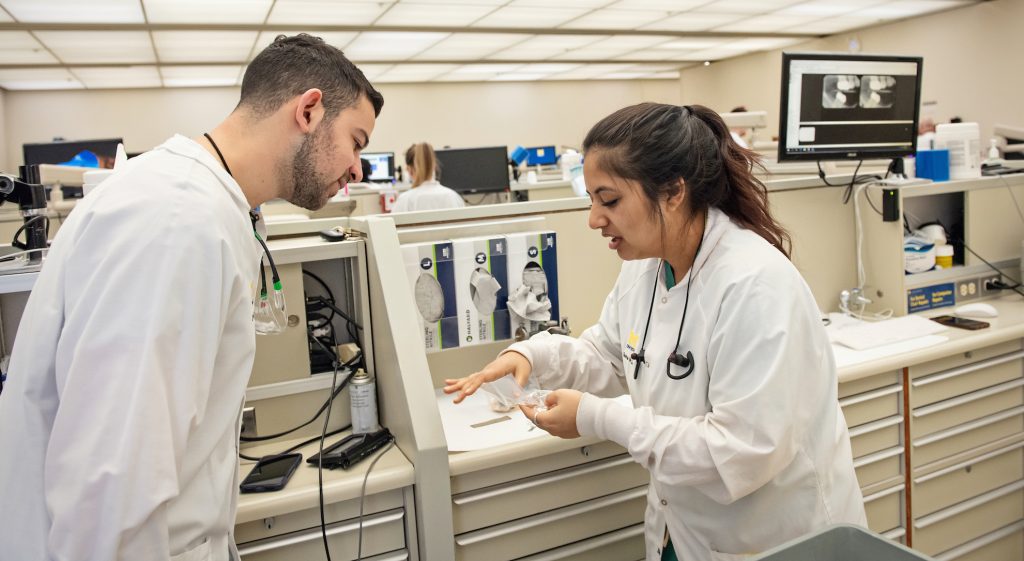
Samona said he appreciates how everyone accepted him. “When I first started dental school as only deaf student in my class, I was concerned about how others would think of me and how it would affect my experience here at the dental school,” he said. “When I met the faculty and administrators, they were all very eager and welcoming. I really enjoyed learning from them in both classroom and clinic settings. When I first met my classmates, they were all very welcoming and I have developed many strong friendships throughout my four years. Despite the rigorous curriculum and countless hours of studying, this was the best four years of my life so far due to a positive experience I received around the administrators, faculty and my classmates.”
As graduation draws near, Samona is confidently looking forward to the next chapter. His confidence is born of meeting and overcoming challenges throughout his life. “I wouldn’t change anything about my life,” he said, “because the challenges that I face have motivated me to work harder and have shaped me into the person that I am today.”
In July, he’ll begin a one-year Advanced Education in General Dentistry program at the University of Texas Health Science Center at San Antonio. He said he’ll be sad to leave U-M, but he’s looking forward to the experience of living and working in a new place. After finishing the AEGD program he plans to move back to Michigan. The state does not currently have a deaf provider in general dentistry who can fully communicate with patients in American Sign Language, Samona said. He plans to change that.
“I would like to open a practice here for the deaf as well as hearing patients,” he said. “That’s my end goal.”
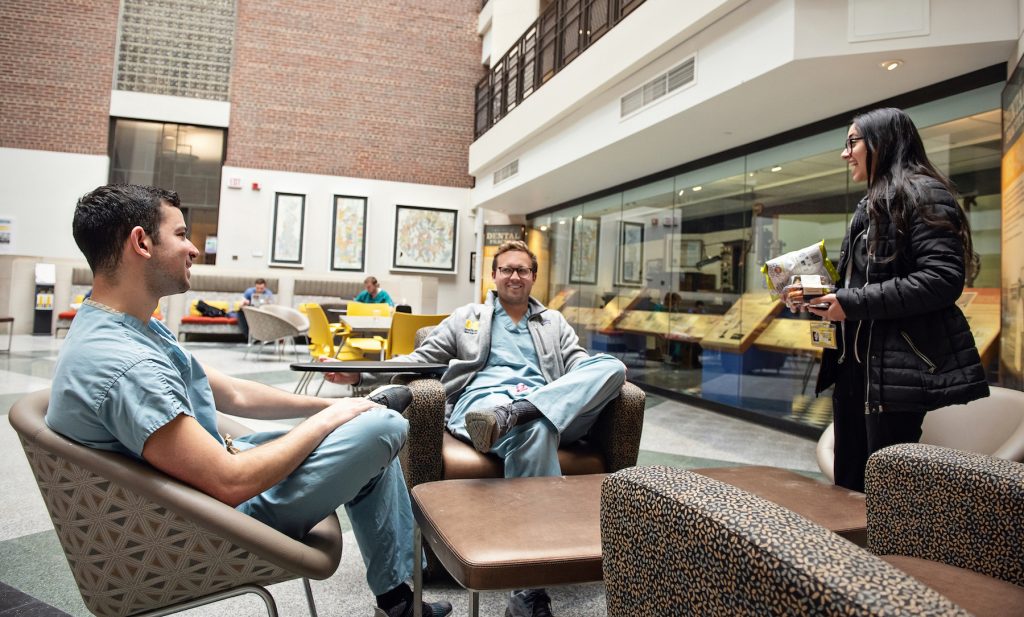
###
The University of Michigan School of Dentistry is one of the nation’s leading dental schools engaged in oral health care education, research, patient care and community service. General dental care clinics and specialty clinics providing advanced treatment enable the school to offer dental services and programs to patients throughout Michigan. Classroom and clinic instruction prepare future dentists, dental specialists and dental hygienists for practice in private offices, hospitals, academia and public agencies. Research seeks to discover and apply new knowledge that can help patients worldwide. For more information about the School of Dentistry, visit us on the Web at: www.dent.umich.edu. Contact: Lynn Monson, associate director of communications, at [email protected], or (734) 615-1971.

